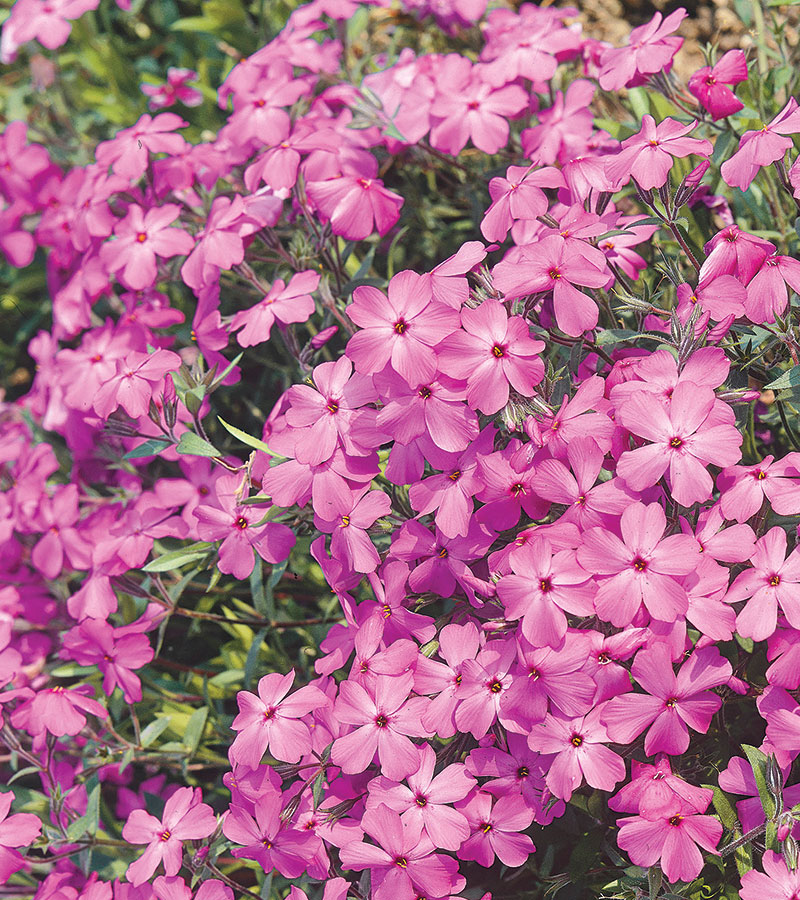
1. Inland New Jersey Tea

Ceanothus herbaceus
Zones: 4–8
Size: 2 to 3 feet tall and wide
Conditions: Full sun; dry to medium, well-drained soil
Native range: Eastern and central United States and adjacent Canada
This native prairie shrub forms neat, rounded mounds of dense foliage topped by showy white flowers in May and June. The tiny flowers bloom in rounded clusters, about 3 inches in diameter with 20 to 30 flowers each, that attract butterflies, hummingbirds, and other pollinators. The unusual common name refers to an eastern relative, New Jersey tea (Ceanothus americanus, Zones 4–8), which was used as a tea substitute during the American Revolution.
2. Junegrass

Koeleria macrantha
Zones: 3–8
Size: 1 to 2 feet tall and 9 to 18 inches wide
Conditions: Full sun to partial shade; dry to medium, well-drained soil
Native range: Western and central United States and adjacent Canada
Many familiar prairie grasses are warm-season species that flower in mid to late summer. Junegrass is a cool-season type that greens up and flowers in early summer. A tufted, clump-forming bunchgrass, Junegrass has a refi ned architecture complemented by an abundance of flower stalks that rise above the foliage and bear tapered, cylindrical spikes of light green florets. As the seeds form and mature, the 3-to-5-inch-long spikes take on an attractive silvery-green sheen. This native grass may go dormant in summer, so plant it with companions that shine in summer and fall.
3. Shell-leaf Penstemon

Penstemon grandiflorus
Zones: 3–7
Size: 2 to 4 feet tall and 12 to 18 inches wide
Conditions: Full sun; dry to medium, well-drained soil
Native range: North-central United States
The impressive bearing of this prairie wildflower comes from a robust, upright growth habit and the attractive, waxy-bluish cast of its lanky stems and large, roundish leaves. But the real show is the abundance of big, bell-shaped flowers in May and June. The size and shape of the flowers accommodate the burliness of bumblebees, which are frequent visitors. Like a lot of penstemons, shell-leaf penstemon is a bit short-lived—four to five years— but it produces an abundance of seed, which helps ensure its persistence in the garden.
4. Prairie Phlox

Phlox pilosa
Zones: 3–8
Size: 1 to 2 feet tall and 12 to 18 inches wide
Conditions: Full sun to partial shade; dry to medium, well-drained soil
Native range: Eastern and central United States and adjacent Canada
This native phlox is widely distributed across the eastern United States and occurs in a variety of plant communities. But in the Upper Midwest, it is primarily a plant of tallgrass prairie and oak savanna. Prairie phlox is one of the showiest wildflowers of these grassy places, producing bright clusters of pink, purple, and sometimes white flowers in May and June. This pollinator magnet is known to attract nearly 20 different species of butterflies. As a wildflower, prairie phlox occurs in colorful drifts, and it looks best in the garden planted in masses.
—Jim Locklear is director of conservation at Lauritzen Gardens in Omaha, Nebraska, and editor of the revised version of Jewels of the Plains, Claude Barr’s classic guide to the wildflowers of the Great Plains.

















Comments
Log in or create an account to post a comment.
Sign up Log in